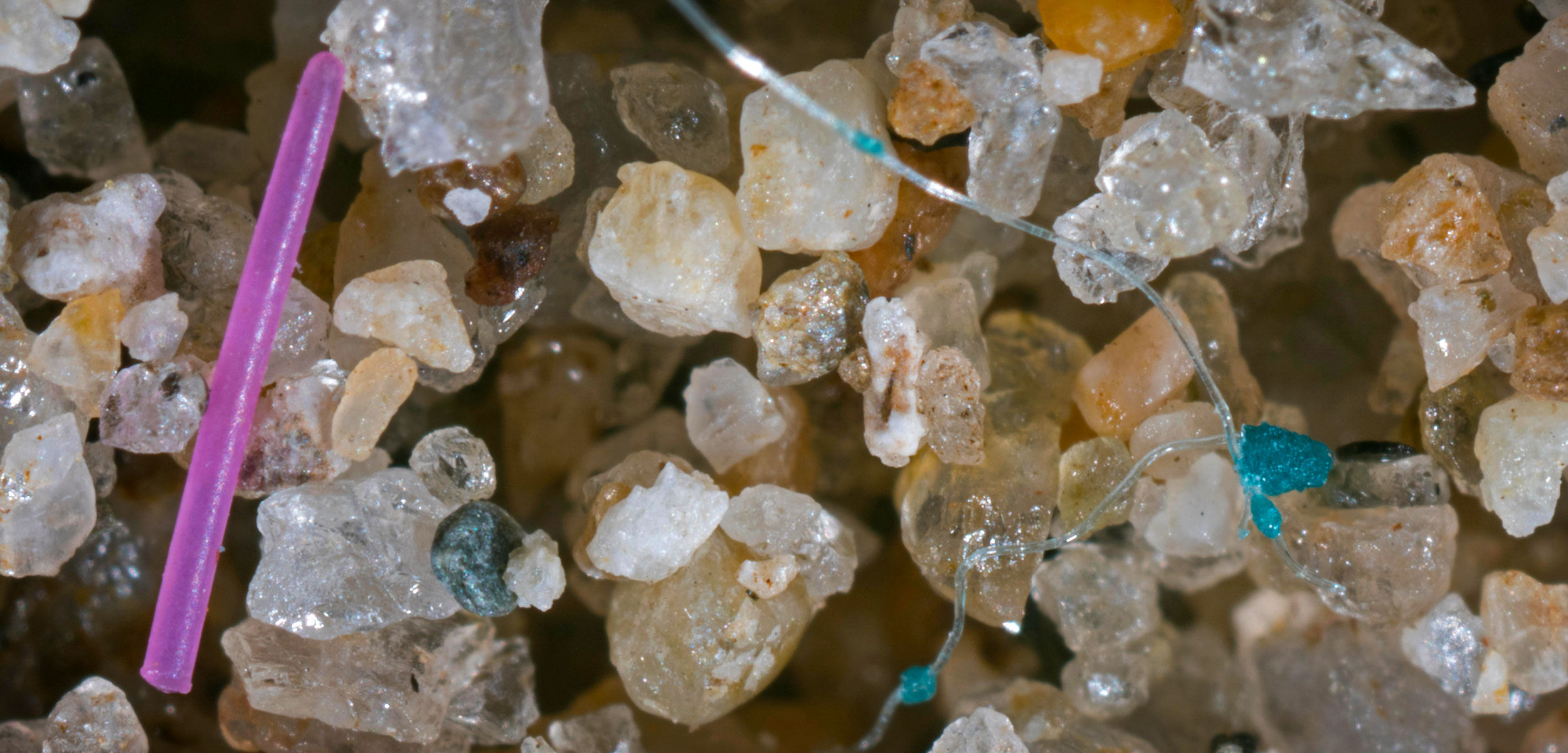Microplastics Are Highly Diverse and Those Differences Matter
The small pieces of plastics that pollute our oceans are more diverse than we make them out to be. Recognizing their variety may help us find solutions.
Article body copy
The oceans contain a medley of tiny plastic fragments. In a sample of seawater, scientists might find thin fibers, degraded fragments, and a slurry of particles that are too small to see. Yet every piece of this plastic soup goes by the same name: microplastics. And according to researchers, this catch-all term is muddling our understanding of a complex class of environmental pollutants.
Scientists have found microplastics nearly everywhere they have looked, from Arctic sea ice to the ocean’s depth. Yet these plastic particles, defined as pieces smaller than five millimeters (about the size of a pencil eraser), are as varied as they are rampant. They can be spherical, fibrous, irregularly shaped, or foamy. And they can be made of hundreds—if not thousands—of different plastic polymers, each with its own chemical properties. “There are almost infinite combinations,” says Kennedy Bucci, a graduate student at the University of Toronto in Ontario who coauthored a recent paper on the diversity of microplastics.
The problem, Bucci says, is that policymakers and journalists tend to group all microplastics under the same umbrella. Research suggests, however, that different microplastics actually affect organisms in different ways. Conflating them oversimplifies the research, confuses public perceptions, and makes it difficult to develop effective solutions.
Bucci is often surprised to hear people say that banning microbeads in cosmetics has solved the microplastics problem. “Microbeads are just one of many sources of microplastics [in] the environment,” she says.
Bucci says scientists are also guilty of glossing over the differences between microplastics. The science of understanding the nuances between microplastics is still in its infancy, says Richard Thompson, a marine biologist at the University of Plymouth in the United Kingdom.
In the lab, scientists mostly use plastic beads to test the effects of microplastics on organisms, but fibers are more commonly found in the guts of marine creatures. More tests need to be done with microplastics of different shapes and sizes that better reflect what’s in the environment, Thompson says.
This oversight and others can help explain scientists’ sometimes-inconsistent findings. Some studies, for instance, show that marine creatures are unharmed by the plastic particles they ingest, while others have found that microplastics can reduce reproduction in marine worms and kill juvenile loggerhead turtles. Recognizing microplastic diversity might account for these wildly differing effects.
Already, evidence suggests that some microplastics may be worse than others. Nanoplastics—particles under 0.1 micrometers in diameter—are likely small enough to infiltrate tissues and cells, which may increase their biological impacts. And microfibers are thought to be more harmful than microbeads. Last year, researchers in Australia found that polyester fibers are more deadly to water fleas than polyethylene beads.
Different chemical compositions also likely alter the ecological implications of microplastic pollution, Bucci says. The molecules that make up polyvinyl chloride (PVC), used in pipes and construction materials, are known carcinogens in humans and animals. Meanwhile, the building blocks of polyethylene and polypropylene, plastics commonly used in packaging, are relatively inert. Chemicals added to plastics during production, such as toxic flame retardants and endocrine disrupting phthalates, can further amplify harmful biological effects.
Making sense of this hodgepodge of tiny plastic particles is no easy task. Identifying a mysterious piece of plastic that could have traveled hundreds of kilometers is tricky enough, let alone untangling how it might interact with different parts of an ecosystem, says Peter Ross, vice president of research at the nonprofit organization, Ocean Wise. “The challenge with microplastics is that none of them come with a label.”
If we want to find solutions for microplastics, Bucci says, we need to account for their diversity. Knowing more about the shape, size, and composition of a piece of plastic might help researchers separate the truly dangerous microplastics from the benign. Policymakers could then develop strategies that target the most harmful types, cutting them off at the source.
“There’s no silver bullet,” Bucci says. Managing many pollutants requires many solutions.

